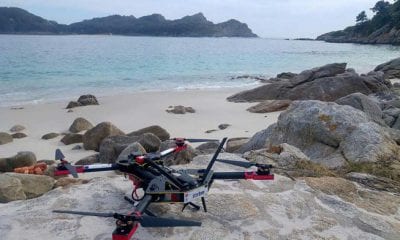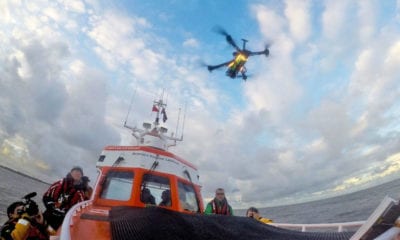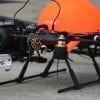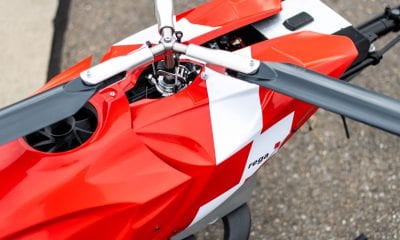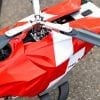News
Drones Swarms and AI for Search and Rescue Operations at Sea
According to the United Nations Secretary General and the Strategy document on New Technologies, the system is meant to “support the use of new technologies such as artificial intelligence as well as robotics to accelerate the achievement of the 2030 Sustainable Development Agenda.”
This is why a group of authors at the University of Bologna, Italy have decided to use Artificial Intelligence (AI) for search and rescue operations at sea. The relevance of the drone swarm in this case as well as the use of technology is clear – to help the search and rescue missions and yield with more lives saved at sea. The paper is titled, “Intelligent Drone Swarm for Search and Rescue Operations at Sea.”
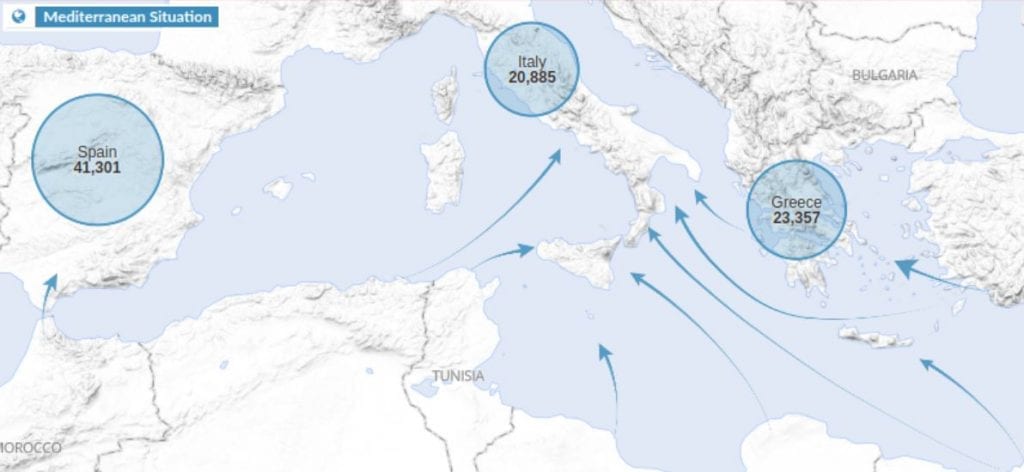
Migration flows in the Mediterranean area as documented by the UNHCR. Numbers for each nation indicate the total number of arrivals in 2018 (last update 2018-10-01).
However, many are questioning the use of drones for this project – and whether it is fit for monitoring a large area of water for search and rescue operations – mostly because it is a difficult task and needs a lot of determination.
Reducing Operational Costs and Providing More Efficient Support for Search & Rescue Operations
Vehicles like UAVs can operate in tough conditions. In general, they are faster and more efficient in covering large areas – but lack in proper flight anatomy and communication capacities due to their limited line of sight (LoS) in the ground-to-air communication link.
“For example, a common scenario for SAR operations would be to monitor a large area of 30×30 km2 at a distance of 20km from the base (ship or land station). This kind of operations are not easily accomplished with a single UAV. In fact, with the expected battery lifetime (of about 2h) and with an average speed of 50mph of an off-the-shelf fixed-wing UAV, covering an area of more than 10 × 10 km2 is not feasible nowadays. Moreover, the wireless communication link between the UAV and the base station, which is used for video streaming and for the actual detection of endangered people, is not strong enough to support the bandwidth requirement after a few kilometers,” the paper describes.
This is why an Intelligent Drone System is proposed as a way to tackle the aforementioned problems – and to use within an autonomous fleet of UAVs to accomplish the task. The UAV swarm can here be capable of generating a multi-hop communication links that are provided by longer LoS connections.
As the authors describe:
“The central idea is to use an autonomous fleet of intelligent UAVs to accomplish the task. The self-organizing UAVs network would enable the coverage of a larger area in less time, reducing the impact of the limited battery capacity. Recent works on UAVs networks shown their ability of coverage and connectivity improvements in emergency scenarios [15]. Indeed, the UAVs swarm is capable of generating a multi-hop communication network that will guarantee a higher bandwidth due to aerial-to-aerial communication links provided by longer LoS connections. Artificial Intelligence tools, in this case, would greatly improve not only the autonomy and coordination of the UAVs network, but also the communication efficiency.”
They also added that autonomy and coordination are one of the most important skills of this drone, mainly implemented due to the autonomous adaptation of mobility actions and communication parameters to non-stationary environmental conditions.
Will the High Costs be a Challenge?
Thanks to the recent advances in the field of artificial intelligence (AI) such as specialized AI chips and quantization/pruning technologies, the challenges associated with this project are constantly reducing.
“Even though the costs will be high upfront, the scalability and sustainability of this system will ensure a proportional reduction of any additional long term expenses,” the authors are confident. As they noted, many challenges may arise during the deployment of this kind of networks in real-world scenarios.
At the same time, this is why research is crucial for further development of this technology to help the ultimate goal of saving human lives. As such, the authors believe that a research effort in this direction is currently paramount for search and rescue operations which aim to save more lives at open sea.
Citation: Intelligent Drone Swarm for Search and Rescue Operations at Sea, Vincenzo Lomonaco, Angelo Trotta, Marta Ziosi, Juan de Dios Yáñez Ávila, Natalia Díaz-Rodríguez, arXiv:1811.05291, Computers and Society (cs.CY); Artificial Intelligence (cs.AI), https://arxiv.org/abs/1811.05291


